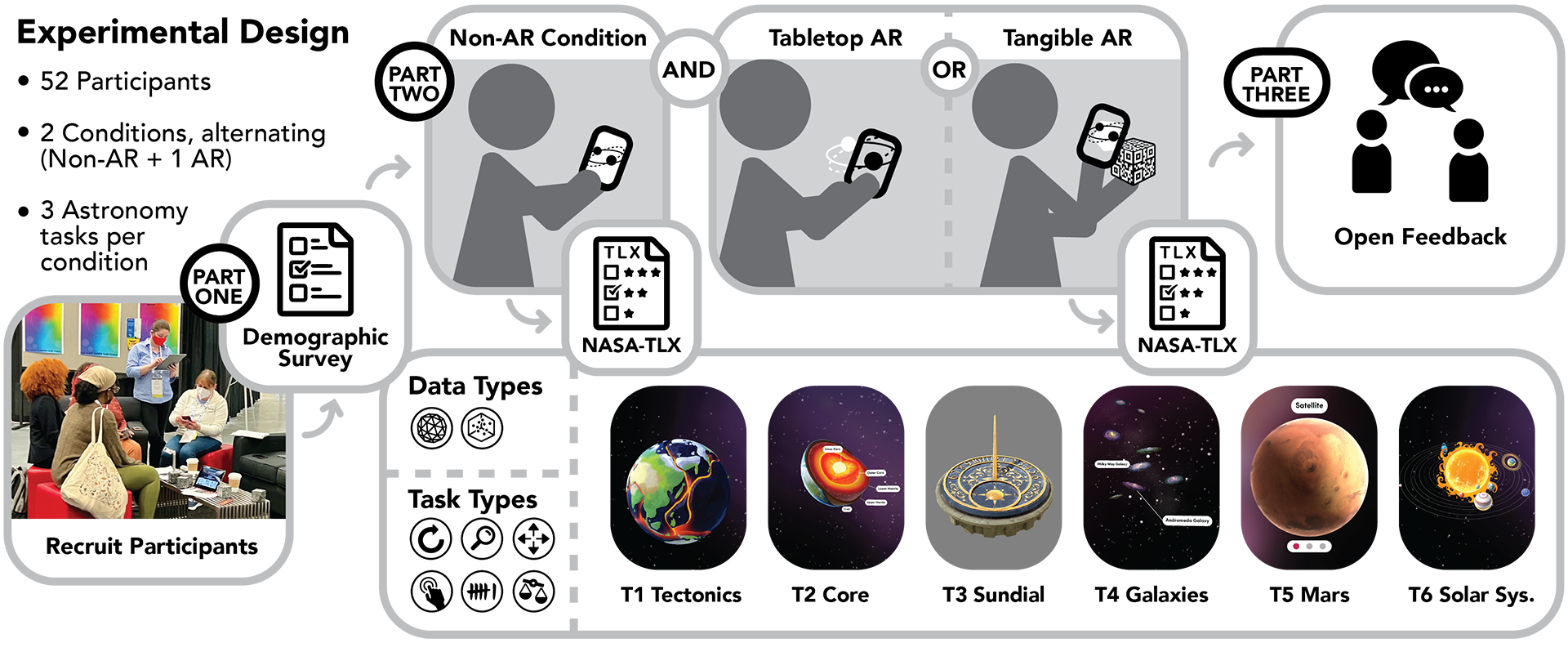Augmented reality as a visualization technique for scholarly publications in astronomy: an empirical evaluation

Abstract
We present a mixed methods user study evaluating augmented reality (AR) as a visualization technique for use in astronomy journal publications. This work is motivated by the highly spatial nature of scientific visualizations employed in astronomy, including spatial reasoning tasks for hypothesis generation and scientific communications. In this 52-person user study, we evaluate two AR approaches (one traditional tabletop projection and the other with a 'tangible' aid) as spatial 3D visualization techniques, as compared to a baseline 3D rendering on a phone. We identify a significant difference in mental and physical workload between the two AR conditions in men and women. Qualitatively, through thematic coding of interviews, we identify notable observed differences ranging from device-specific physical challenges, to subdomain-specific utility within astronomy. The confluence of quantitative and qualitative results suggest a tension between workload and engagement when comparing non-AR and AR technologies. We summarize these findings and contribute them for reference in data visualization research furthering novel scientific communications in astronomy journal publications.
Authors
Citation
Augmented reality as a visualization technique for scholarly publications in astronomy: an empirical evaluation
Jane L. Adams, Laura South, Arzu Çöltekin, Alyssa Goodman, and Michelle A. Borkin. IEEE Transactions on Visualization and Computer Graphics—VIS/TVCG. 2023. DOI: 10.31219/osf.io/93brd
PDF | Preprint | DOI | Supplement | Preregistration | BibTeX
Khoury Vis Lab — Northeastern University
* West Village H, Room 302, 440 Huntington Ave, Boston, MA 02115, USA
* 100 Fore Street, Portland, ME 04101, USA
* Carnegie Hall, 201, 5000 MacArthur Blvd, Oakland, CA 94613, USA



